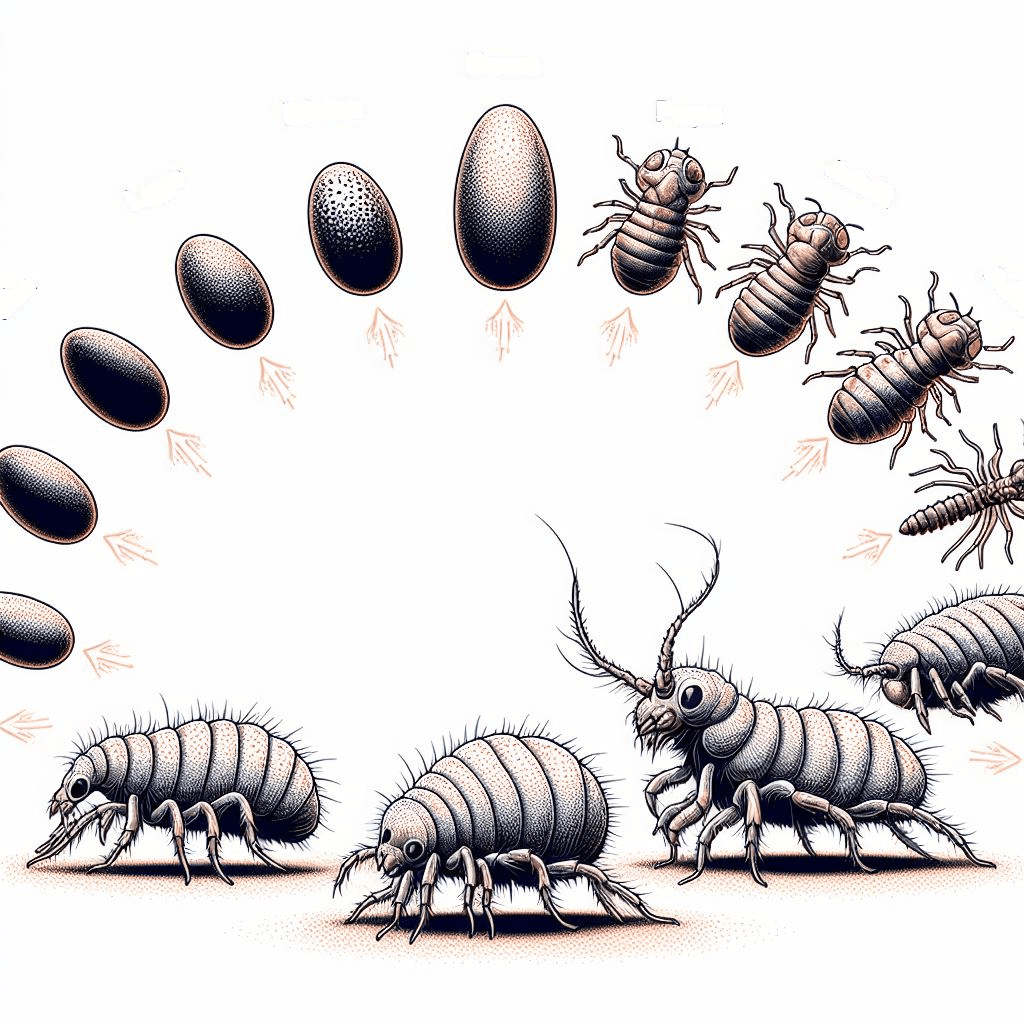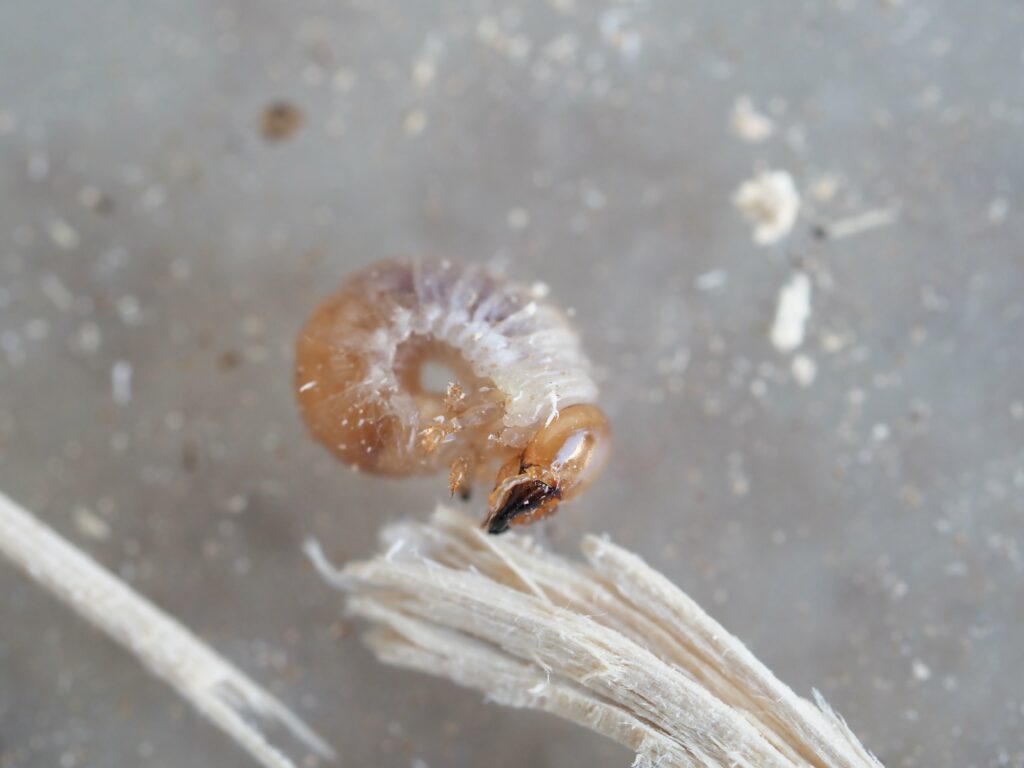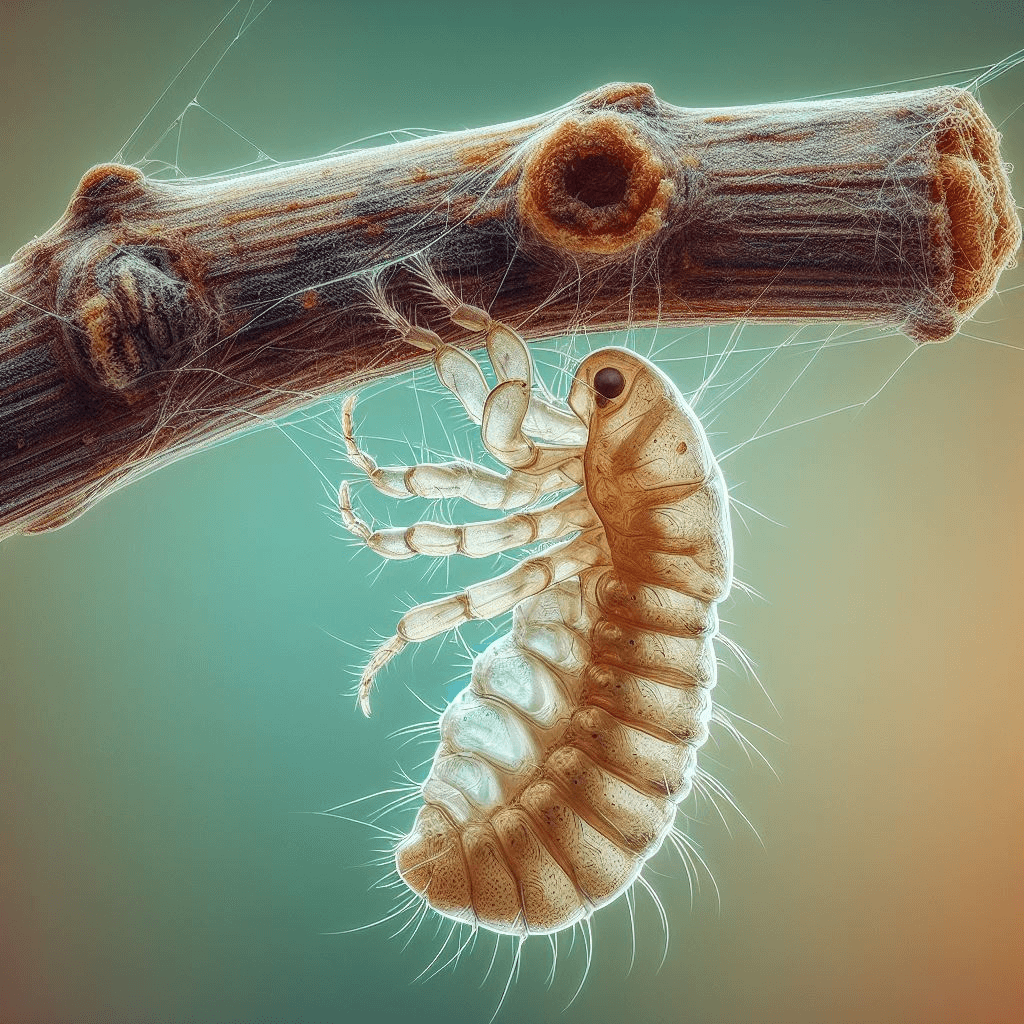Imagine a tiny, persistent creature that inflicts itchy misery upon pets and humans alike. Yes, we’re talking about fleas – those minuscule yet troublesome insects that have plagued our lives for centuries.
Fleas are parasitic insects that survive by feeding on the blood of mammals and birds. The most common species, Ctenocephalides felis, or the cat flea, tends to be particularly fond of our furry feline friends cats, but can also pester dogs, cats, and even humans in their quest for a blood meal.
Unraveling the Flea Mystery: A Brief Overview

To truly understand fleas and the implications of fleas on our lives, it’s crucial to grasp their life cycle. Like many other insects, fleas undergo a complete metamorphosis consisting of four stages: egg, larva, pupa, and adult flea. Each stage plays a vital role in maintaining the population of these pesky critters.
The Importance of Understanding the Flea Life Cycle
Knowledge is power when it comes to combating these relentless parasites. Understanding the different stages of the flea life cycle enables us to take proactive measures against infestations. By targeting flea treatment specific stages and interrupting their progression from one phase to another, we can effectively treat fleas and break the vicious cycle.
The Domino Effect: The Impact on Pets and Humans

Fleas are more than just an annoyance; they pose significant risks to our beloved pets’ health and well-being. These tiny hitchhikers can transmit diseases or cause allergic reactions in cats and dogs through their saliva during feeding.
Moreover, when flea bites go unnoticed or left untreated, flea infestations can lead to anemia, weight loss, and dermatitis in our furry companions. Humans are not spared from flea treatment either.
Fleas can bite humans, causing itchy welts that may lead to secondary infections when scratched excessively. Additionally, fleas can transmit zoonotic diseases, such as murine typhus or bartonellosis (cat scratch disease), from our pets to us.
The Battle Begins: Taking Control
To effectively combat fleas and protect both our pets and ourselves, we must take a holistic approach. By understanding the flea life cycle, we can break the flea life cycle fleas have at its weakest points and thereby prevent fleas from further reproduction.
Regularly treating our pets with veterinarian-approved flea control products is essential to tackle adult fleas and prevent their ability to lay eggs. Simultaneously, treating the environment kills fleas by vacuuming regularly and washing pet bedding can treat fleas and eliminate organic debris where flea larvae thrive.
Remember, knowledge is key when waging war against these resilient pests. So let’s dive deeper into each stage of the flea life cycle to gain a comprehensive understanding of how these minuscule creatures operate and what measures we can take to protect ourselves and our beloved pets.
The Flea Life Cycle: An Overview
From Egg to Adult: Unraveling the Secret Journey of Fleas
Fleas, those pesky little insects that torment our pets and cause havoc in our homes, undergo a fascinating life cycle consisting of four distinct stages. Understanding the flea life cycle is crucial in effectively combating and preventing flea infestations. So, let’s delve into this intriguing journey and shed some light on each stage.
Egg Stage: Tiny Ovals of Hope
The first stage of the flea life cycle begins with the humble egg. After a first blood meal, from their host (often our beloved pets), a full adult female flea, can lay up to 50 eggs per day! These minuscule oval-shaped eggs aren’t easy to spot with the naked eye.
They usually fall off our pets’ fur onto various surfaces such as pet bedding, carpets, or furniture. In favorable conditions like warm temperatures and high humidity, these dormant eggs will hatch within a few days.
Larva Stage: Worm-like Explorers
Once hatched, the second stage commences with the emergence of worm-like larvae hungry for sustenance. These tiny creatures are almost invisible to us due to their small size and lack of distinct features.
Seeking shelter away from direct sunlight, they find comfort in dark crevices such as carpets or cracks in floors. Feeding frenzies begin as these larvae consume organic matter like skin flakes or pet dander, but even flea dirt (the droppings left behind by adult fleas).
Their appetite is voracious! The larval stage typically lasts for several weeks while they undergo multiple molts before entering their next transformative phase.
Pupa Stage: Transformation in Silence
The pupal stage is where magic happens within those seemingly ordinary cocoons. Encased within their protective shelters, the larvae undergo metamorphosis, transforming into pupae.
This stage is vital for their survival as they prepare to emerge as fully-fledged adults. During this period, pupae are incredibly resilient and can withstand harsh environmental conditions for extended periods.
The cocoon acts as a fortress, shielding them from threats while they mature. Interestingly, these cocoons can remain dormant for weeks or even months before emerging when stimulated by factors such as vibrations or body heat – a signal that a potential host animal is nearby.
Adult Stage: Fleas Take the Spotlight
The final act of the flea life cycle welcomes the emergence of fully developed adult fleas from their cozy cocoons. These nimble creatures are primed and ready to seek out a blood meal from our unsuspecting pets or even ourselves!
With powerful legs designed for jumping great distances, it’s no wonder they can effortlessly navigate through pet fur and human hair. Once an adult flea finds a host, it begins feeding within mere seconds.
Sustained by blood meals, females are particularly prolific egg producers, capable of laying hundreds in their short lifespan. And so, the life cycle continues to repeat itself unless intervention takes place to break this perpetual chain.
Understanding the stages of the flea life cycle equips us with knowledge essential in combatting these miniature adversaries effectively. By targeting each stage strategically through proper hygiene measures and using appropriate insecticides that kill fleas at different life stages, we can eliminate not only individual fleas but also disrupt the entire flea population—freeing our pets and homes from these formidable foes.
Egg Stage: Hidden Beginnings
Details on where fleas lay their eggs
When it comes to the fascinating world of how fleas live, their reproductive journey begins with the humble egg stage. Female fleas possess an astonishing ability to lay hundreds of eggs during their lifetime, and knowing where they prefer to deposit these minuscule ovals is crucial in understanding how flea populations thrive.
These tiny eggs of a single flea can be found in various locations, both indoors and outdoors. One common hot spot for flea egg-laying is in the cozy confines of our pets’ bedding and resting areas.
Fido’s favorite cushion or Fluffy’s plush bed can unwittingly become a nursery for a burgeoning flea population if not diligently cleaned and treated regularly. Flea eggs are microscopic in size, allowing them to easily blend into fabric fibers and hide from prying eyes.
Another favorite breeding ground for fleas within our homes is the carpeted areas, rugs, and furniture. These surfaces provide an ideal environment for egg deposition due to their ability to retain warmth and moisture that aids in optimal development.
The intricate network of carpet fibers becomes a haven for the minuscule flea eggs themselves, camouflaging them until they hatch into larvae. Outdoor areas frequented by our pets are not exempt from becoming fertile ground for flea eggs either.
Gardens, lawns, patios, or any area where our furry companions spend time can harbor these hidden beginnings. Flea infestations often start outside before finding their way into our homes through unsuspecting pets who unknowingly carry them indoors.
Factors influencing egg production and viability
The success of flea egg production lies not only in suitable locations but also depends on specific environmental conditions conducive to optimal development. Temperature plays a vital role as most fleas thrive in warm environments ranging between 70-85 degrees Fahrenheit (21-29 degrees Celsius).
Fluctuations in temperature can affect the viability of eggs, potentially causing them to hatch prematurely or fail to develop entirely. Humidity is another critical factor influencing egg production and survival.
Fleas prefer humidity levels of 70-85%, as higher moisture content aids in maintaining the necessary conditions for their life stages. Drier environments can hinder the development of flea eggs, while excessively humid conditions may encourage mold growth instead.
We must acknowledge the incredible reproductive prowess of female fleas. These tenacious insects have the remarkable ability to lay up to several hundred eggs during their lifetime.
Once a blood meal has been consumed from our pets, female fleas can start to again begin feeding and laying eggs again within a few hours and continue doing so for several weeks. This relentless reproductive cycle is what contributes significantly to flea populations rapidly multiplying if left unchecked.
Understanding where fleas lay their eggs and the factors influencing egg production and viability allows us to take proactive measures in preventing infestations. By meticulously cleaning pet bedding, regularly vacuuming carpets and furniture, and implementing effective flea control methods both indoors and outdoors, we can disrupt this hidden beginning stage of fleas’ life cycle and protect our beloved pets from irritating flea bites.
Larva Stage: The Feeding Frenzy Begins

Description of larval appearance and behavior
During the larval stage, flea larvae are quite different from the adult fleas that wreak havoc on our pets and homes. These tiny creatures appear as white, legless worms with bristle-like hairs covering their bodies. Their delicate and almost transparent appearance allows them to easily blend in with their surroundings, making them notoriously difficult to spot.
Flea larvae have specific preferences when it comes to their living conditions. They tend to avoid light and seek out dark, humid areas away from direct sunlight.
Common hiding spots include carpets, bedding, cracks in the floorboards, and even outdoor areas frequented by pets. These elusive larvae are masters of concealment and can be found lurking in the shadows, making it challenging to eradicate them completely.
Nutritional needs and feeding habits of flea larvae
As they undergo rapid growth during this stage, flea larvae require a diet rich in organic matter. Their primary sources of sustenance include dead skin, flakes shed by humans or animals, pet dander floating in the air or deposited on surfaces, and even flea dirt (the excrement produced by adult fleas). It’s important to note that these tiny creatures do not feed on blood during this stage like their more adult flea counterparts.
To secure their nourishment, flea larvae wiggle around in search of suitable organic debris. They possess mouthparts designed for chewing rather than piercing skin for a blood meal like adult fleas do.
While they may not cause direct harm through bites like adult fleas do, an a flea infestation, can still be distressing due to their sheer numbers. The duration of the larval stage is significantly influenced by environmental conditions such as temperature and humidity levels.
Under optimal conditions—around 70-90°F (21-32°C) with humidity levels between 70-85%—the larvae can complete pupal stage of their development in as little as five to ten days. However, in less favorable conditions, the larval stage may extend to several weeks or even months.
Understanding the larval stage of the flea life cycle is crucial for effective flea control. These white, legless creatures with bristle-like hairs thrive in dark and humid environments away from direct sunlight.
Their feeding habits focus on consuming organic matter such as dead skin, flakes, pet dander, and flea dirt rather than seeking a blood meal like adult fleas. Environmental conditions play a significant role in determining the duration of this stage.
Proper management of temperature and humidity levels is essential when tackling a flea infestation. By comprehending the behavior and nutritional needs of flea larvae, we can develop strategies to disrupt their life cycle and protect our pets and homes from these pesky parasites.
Pupa Stage

A Period of Transformation
Once the flea larvae have reached their optimal size and consumed enough nutrients, they begin their journey towards becoming fully formed adults mature fleas. This remarkable process occurs during the pupa stage, which represents a critical turning point in the life cycle of a flea.
As the larvae spin their cocoons, they undergo metamorphosis, transitioning from worm-like creatures to mature fleas. The pupa stage is an intriguing phase shrouded in mystery, as it takes place within a protective cocoon that shields the developing fleas from external threats.
These cocoons often blend seamlessly into the surrounding environment, camouflaging themselves with materials such as carpet fibers or dust particles. The pupae are strategically hidden away in cozy nooks and crannies where they can patiently await favorable conditions for emergence.
The Waiting Game
During this stage, fleas are highly resilient and can remain dormant inside their cocoons for extended periods. The duration of this phase depends largely on environmental factors like temperature and humidity levels but can range from a couple weeks to several months.
Interestingly, certain triggers such as vibrations or an increase in surrounding warmth—such as body heat—are known to stimulate adult flea emergence from pupae. The ability of fleas to stay protected within their cocoons makes them especially challenging to control during infestations.
Even when you successfully eliminate adult fleas through treatments or preventive measures, there may still be dormant flea pupae, waiting for ideal conditions to hatch into new fleas. Understanding this critical life stage is crucial for tackling infestations comprehensively and preventing reinfestation by treating not only adult fleas but also eggs and larvae.
Conclusion
Comprehending the intricate life cycle continues how of a flea is fundamental to effectively managing these persistent pests and safeguarding our beloved pets and homes. From understanding where fleas lay eggs and the different life stages they undergo to recognizing their resilient nature during the pupa stage, we gain insights into how to disrupt their life cycle and control infestations.
By tackling fleas at various stages, including eggs, larvae, pupae, and adults, we can break the chain of reproduction and eliminate the entire flea population. Remember that prevention is key in prevent fleas and maintaining a flea-free environment.
Regularly treating pets with appropriate products, keeping their resting areas clean, and vacuuming frequently are essential practices. Additionally, consulting with a veterinarian for guidance on preventive measures tailored to your pet’s needs is highly recommended.
By arming ourselves with knowledge about fleas and implementing effective strategies for prevention and control, we can ensure a happier, healthier living space for our furry friends. So let us stay vigilant in our fight against these tiny adversaries while delighting in the comfort of a flea-free home!
Get rid of fleas with D-Termination: Las Vegas’ top-tier pest control service!

If you’re grappling with flea issues on your Las Vegas property, D-Termination is ready to assist. Our expert team specializes in eliminating flea infestations and restoring comfort and peace to your space. Bid farewell to fleas—opt for D-Termination for effective pest control today!
Reach out to us at 702-919-6310 or visit dtermination.com to book your flea control service and reclaim your space from these pesky pests.
Frequently Asked Questions:
Breaking the flea life cycle usually takes several weeks of consistent treatment.
The flea life cycle includes egg, larva, pupa, and adult stages.
A flea infestation is considered over when there are no signs of fleas or their bites for an extended period.
Insecticides or treatments containing ingredients like IGRs (Insect Growth Regulators) can target all stages of the flea life cycle.








